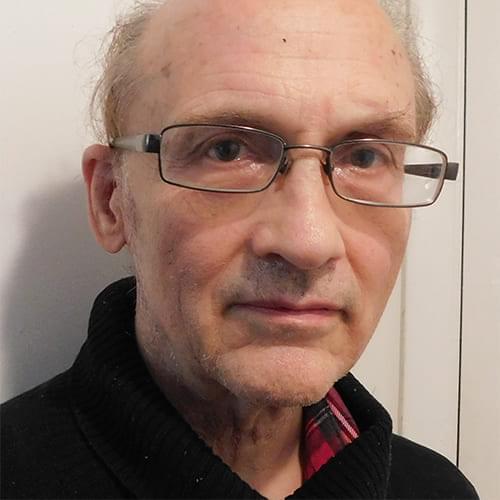Ben Best
Ben Best is the Director of Research Oversight at the Biomedical Research & Longevity Society (formally the Life Extension Foundation) and former President of the Cryonics Institute. Ben is also certified as a Professional Registered Parliamentarian by the National Association of Parliamentarians.
As Director of Research Oversight, he is involved in monitoring the grants being given by the Biomedical Research & Longevity Society to 21st Century Medicine, Nectome, and Advanced Neural Biosciences — all organizations involved in doing cryonics-related cryobiological research. His major contribution to science is his paper Cryoprotectant Toxicity: Facts, Issues, and Questions.
Ben is active in the field of biogerontology and regularly attends biogerontological conferences, many of which he reports in Life Extension magazine. He has debated with Aubrey de Grey in the Community Bulletin Board of SAGE KE.
His monograph Mechanisms of Aging was reprinted in the Anti-Aging Clinical Protocols 2004–2005 of the American Academy of Anti-Aging Medicine.
Ben’s review Nuclear DNA damage as a direct cause of aging challenges the OncoSENS claim that nuclear DNA damage only matters for aging because of cancer.
Ben earned his Bachelor’s Degree of Science in Physics and Computing Science and his Bachelor’s Degree of Business Administration in Accounting and Finance, both in 1987 at Simon Fraser University. He earned his Bachelor’s Degree of Science in Pharmacy in 1974 from The University of British Columbia.
After graduating, Ben started his career in Toronto as a Senior Programmer/Analyst for Scotiabank. While in Toronto, Ben’s dominating interest was life extension. Initially this involved learning about mechanisms of aging, health, nutrition, and a search for supplements to slow aging. Then he learned more about cryonics, and that became a passionate concern for many years.
In May 1991, at their first Directors meeting, Ben was elected Treasurer of the Cryonics Society of Canada. He also became President and Editor of Canadian Cryonics News in 1991 unti the last issue was published in Spring of 2000. Ben also served as treasurer of the Toronto chapter of Mensa, the High IQ Society. Read his contributions on the topic of Cryonics.
Along with many other cryonicists, in the mid-1990s Ben left Alcor Life Extension Foundation to join CryoCare Foundation which had been formed by a small group of dissatisfied Alcor activists in late 1993. In March 1995, he became Secretary of CryoCare and in 1999 became Cryocare’s President for a short time in an effort to prevent the termination of the organization. When CryoCare terminated in the year 2000, mainly as a result of the discontinuation of service in 1999 by its cryopreservation provider Biopreservation, he helped negotiate the transfer of CryoCare’s two cryonics patients from its long-term patient care provider, CryoSpan, to Alcor.
In 2001, Ben became President and CEO of The Institute For Neural Cryobiology (INC). Ben thus helped to ensure the completion of the Hippocampal Slice Cryopreservation Project (HSCP), which had begun in 1998, as a direct result of The Prometheus Project begun by Paul Wakfer in 1996. HSCP, which was being funded jointly by INC and Harbor-UCLA Research and Education Institute, was a project focused on vitrification of rat brain hippocampal slices which involved cooling to −130 °C, rewarming and testing for viability. Discoveries from this research have been incorporated into the vitrification formulations of Twenty-First Century Medicine. The results of the HSCP were published in the April 2006 issue of the journal Cryobiology.
His interest returned to mechanisms of aging and, in particular, Caloric Restriction with Adequate Nutrition (CRAN) as a practical means of slowing aging.
Ben took computer courses at night to upgrade his computer skills to include newer technologies and he took Mechanical Engineering courses (also at night school), completing two certificates which amount to about two-thirds of a degree in Mechanical Engineering.
In September 2002, he was elected a Director of the Cryonics Institute, the world’s second largest cryonics organization. In the Fall of 2002, he had hs first personal experience with a cryonics case. In September 2003, he was elected President of the Institute.
During the following nine years, until his retirement as CI President in 2012, he had the opportunity to participate in many cryonics cases, about which he wrote detailed case reports. He still remained a Director at the time.
In 2007, Ben gave the presentation Evidence that Cryonics may Work at the third SENS conference, held at the University of Cambridge in England. That talk became the basis for a paper published in Rejuvenation Research in 2008 under the title Scientific Justification for Cryonics Practice.
The most popular Cryonics FAQ currently on the web was authored by Ben, and endorsed by Tim Freeman as a replacement for his own cryonics FAQ which was well known during the 1990s.
In 2012, Ben got a job with the Life Extension Foundation, which had him doing a lot of traveling, going to scientific conferences on aging and disease, and writing about these conferences for Life Extension Magazine.
Ben moved to Florida, where the Life Extension Foundation, now the Biomedical Research & Longevity Society, has headquarters. Bill Faloon, who runs the company, wrote a very nice introduction about him in the January 2013 issue.
His work going to conferences around the world has kept him busy writing conference reports. Read more about the topic in the life extension section of his website, and his reports from Life Extension Conferences Reports.
Ben has published articles on his website on more than 150 diverse topics ranging from science and medicine to history and philosophical musings, including Causes of Death, Brain Neurotransmitters, Mechanisms of Aging, Cancer Death — Causes and Prevention, and The History of Christmas.
Read Ben Best: Director of Research Oversight, Life Extension Foundation (Part One).
Visit his LinkedIn profile and his Personal Webpage. Follow him on Facebook and his Blog.
